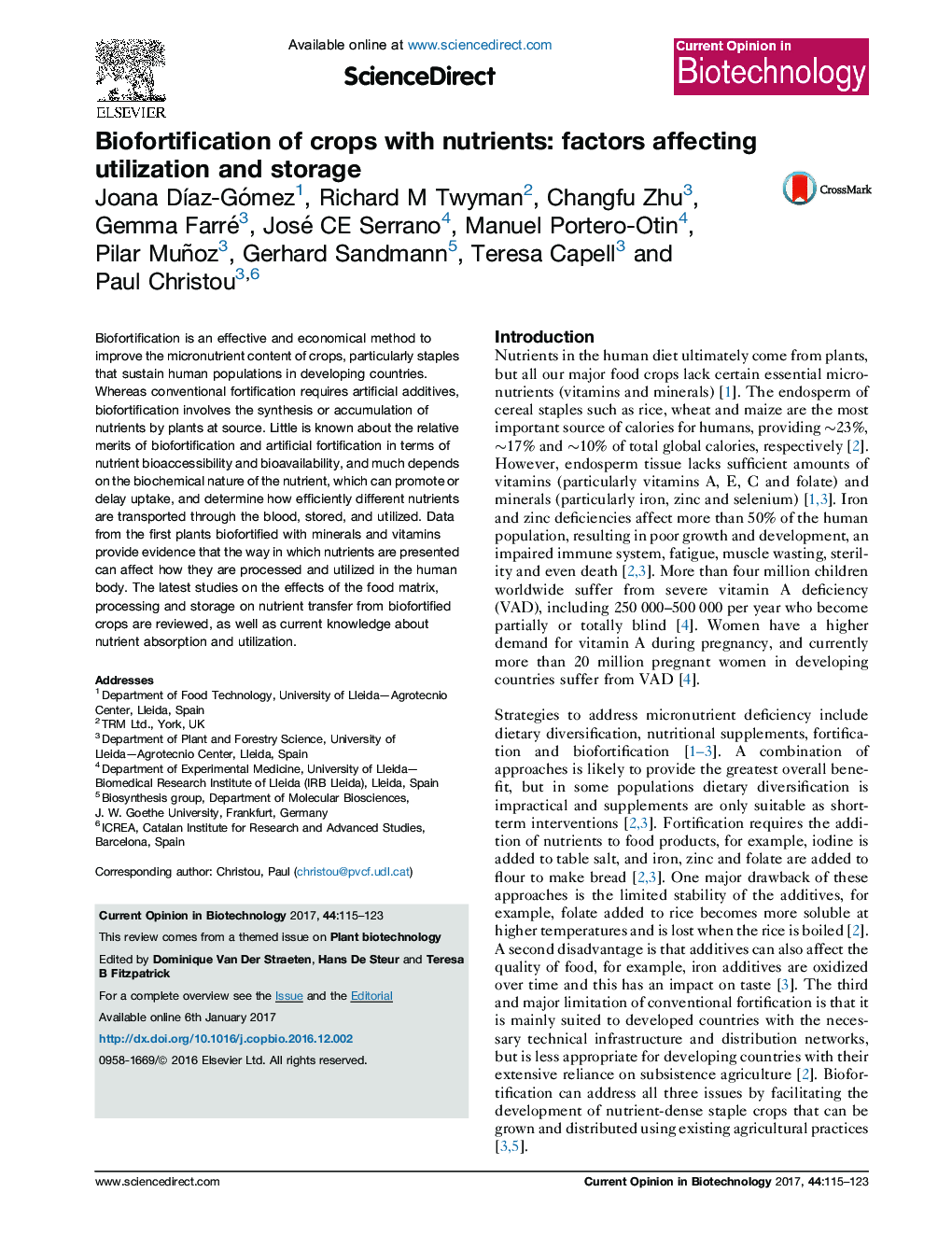| Article ID | Journal | Published Year | Pages | File Type |
|---|---|---|---|---|
| 6451570 | Current Opinion in Biotechnology | 2017 | 9 Pages |
â¢Biofortification involves the synthesis or accumulation of nutrients at source.â¢Nutrient bioavailability is an intrinsic property that depends on the food matrix.â¢Biofortification may promote bioavailability compared to standard fortification.â¢Processing enhances bioavailability by releasing nutrients or eliminating inhibitors.â¢Nutrient levels are affected by genotype, cooking method and storage.
Biofortification is an effective and economical method to improve the micronutrient content of crops, particularly staples that sustain human populations in developing countries. Whereas conventional fortification requires artificial additives, biofortification involves the synthesis or accumulation of nutrients by plants at source. Little is known about the relative merits of biofortification and artificial fortification in terms of nutrient bioaccessibility and bioavailability, and much depends on the biochemical nature of the nutrient, which can promote or delay uptake, and determine how efficiently different nutrients are transported through the blood, stored, and utilized. Data from the first plants biofortified with minerals and vitamins provide evidence that the way in which nutrients are presented can affect how they are processed and utilized in the human body. The latest studies on the effects of the food matrix, processing and storage on nutrient transfer from biofortified crops are reviewed, as well as current knowledge about nutrient absorption and utilization.
Graphical abstractDownload high-res image (207KB)Download full-size image
